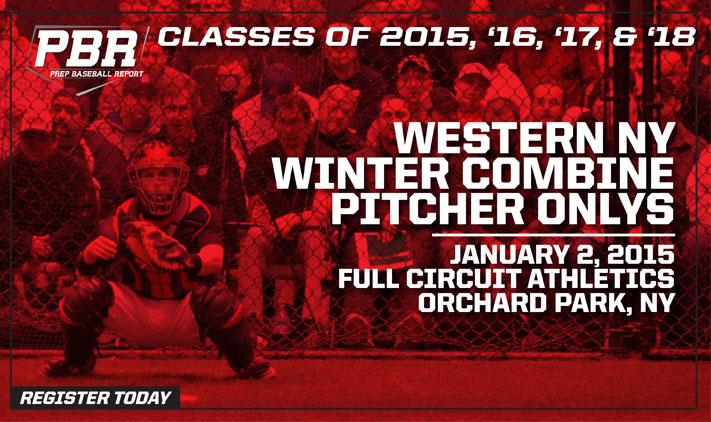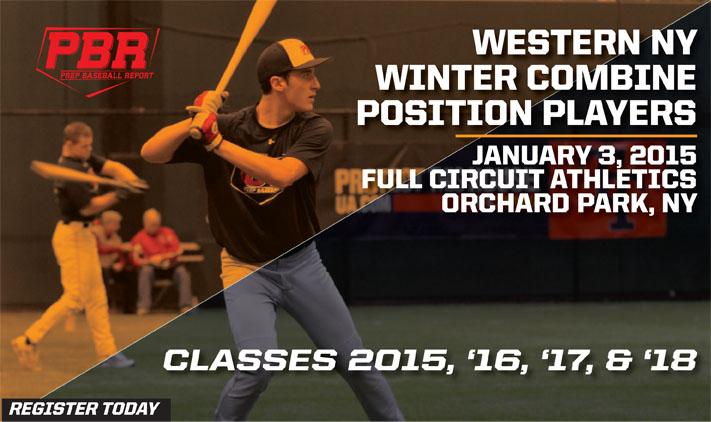Pitching 101, What to Do Now?
November 4, 2014
Dan Cevette
Director, New York
I get asked a lot of questions about baseball, mainly about Pitching. I was a Professional Baseball Pitcher for 11 years in three different MLB Organizations where I was able to fill my knowledge bank on pitching from some impressive instructors. John Farrell, Scott Radinsky, Charles Nagy, and Steve Belcher just to name a few, and I have also picked the brain of Giants Gold Glove Catcher Kurt Manwaring (1992) a time or two. It's the heart and soul of the game, let's get to it.
Pitching 101, What to Do Now?
It's November 4th, the mornings are becoming colder and colder across the empire state, fall leagues from HS-College are finished, and snow is around the corner. Football in most high schools is winding down and now it's on to the basketball court. So what should pitchers be doing from now until spring? It all depends on how good they want to be.
In my opinion, any next level athlete is either getting better or getting worse every single day. Sure our bodies need to take a break from strenuous activities to recover and rebuild, especially pitchers from throwing off a mound, but does anyone actually know why? Pitchers need to take a break from throwing competitively off a mound because the incline of the mound adds 66% more stress on thier shoulder and elbow joints. That increased stress, built up over a long period of time, is a deadly combination and the No. 1 cause to all shoulder and elbow injuries among pitchers today. So shutting down throwing for 3-4 months is a good idea right? Not a chance..
The theory of taking months off of throwing is, to be quite frank, dated. You don't hit the gym for six months, building strength and endurance, to take 3-4 months off losing all you have worked so hard to gain, that would be really silly. Instead we train smarter, harder, and with a purpose all year round. Giving our arms a break for 2-3 weeks (given there is no injuries or pain in the arm) to really "recharge the batteries" is a great idea. After those 20 some days it's time to get back to work.
Now (November) is the time to bulk overall body strength, build shoulder and back strength through different workout routines that are designed specifically for you (there are millions of pitching coaches, with a million training programs), and set short term, reachable goals. It's pretty easy for a HS pitcher to say " I want to throw harder next season " and when March rolls around, they pick up a ball for the first time, and wonder why their development has hit a snag.
The players I currently work with are doing things like reverse throws, weighted ball holds, tennis ball throws, things that are new to the baseball world, but are also being embraced by some of the best in the game. Pitching arms will get stronger, feel better, and last longer if we train them to handle the demands and stress of the over-hand motion.
To recap, I believe in taking a break from traditional pitching (off a mound competitively, throwing long toss every other day) for the winter, but I encourage kids with high goals to take this time (Nov-Dec) to get better, not worse.
For Parents
The Prep Baseball Report New York, will be holding Clinics, and Showcases this winter across much of NY, all ending in Feb with our Preseason All-State Invite Only events for Top Players in NYS. In December and January, if your child is coming to one of our events as a pitcher only, understand winter events are designed for video analysis of mechanics, with no focus on radar guns or velocity. This process is about getting into our system, using our services as a recruiting platform through our national website content and videos, showing off your baseline, foundation, and where you project. Players should be playing catch, however, 2-3 weeks prior to events in the winter, so they are able to handle a day of baseball in the winter.
Our winter events are truly a great opportunity for kids looking for maximum exposure at their state level, from a credible and trusted source. The idea that any serious player puts his recruiting exposure on hold, missing four months out of the year, is not only insane, but a thing of the past. Be sure to check out OUR EVENTS regularly for added events this winter.
Thanks,
Dan Cevette
Director, New York
Pitching 101, LHP vs. RHP
A very common question I get a lot from players and parents is explaining the real difference between a LHP vs. a RHP. Almost everyone believes that left handed pitchers hold more value, but there's a whole lot more to the story than just that.
Left handed pitchers (LHP) are typically highly sought after because of their arm side movement (ball moves away from a right handed hitter) and the simple fact that there just is not that many of them around. With that said a southpaw still needs to be talented to get real looks, the old saying "If he's left handed with a pulse then we are interested" although funny is not accurate. Lefties do get a break on velocity as most scouts and recruiters allow for 3-4 mph of lesser velocity vs. a right handed pitcher (RHP). Of course other factors come into play, pitch ability, pitch mix, size, makeup and projection before important decisions are made.
Comparing the two
Size - This is even, most recruiters look at size the same.
Fastball - Advantage LHP, typically they get a 3-4 mph cushion over a RHP in most recruiting situations/Draft talks.
Changeup - Although both are effective, Advantage LHP, because of the down and away action to a RHH.
Curveball - Advantage RHP, the majority of power curveballs come from RHP, plus its moving away from a RHH.
Running Game - Advantage LHP, facing the baserunner is a huge tactical advantage for any lefty.
Fielding - Advangtage RHP, simply because more put outs are to 1B and they are already opened up and facing 1B.
Pitching 101, Throwing Harder: Keys Every Pitcher Should Try
Want to throw the baseball harder? Tried all the gimmicks? Here's a few things I have done that have helped in the past. Give them a try.
* Increase Overall Body Strength - Adding total body strength will increase your fastball velocity normally 1-2 mph. (Remember to stretch before and after workouts) (Don't have weights or time for a gym? 150 push ups a day will help)
* Reverse Bench Press - This helps build your back up stronger, allowing your arm to work faster
*Reverse Throws - 1-2 lb palates ball (Look up reverse baseball throws on You Tube)
*Throwing Program - Try 1 set of 25 throws with a 6 oz ball. 25 throws with a 5 oz ball and 15 throws with a 3 oz ball. 4 times a week for a month
*Hip and Back Flexibility - Stretching your hips and back out daily can add up to 1-2 mph because of the increased torque from the added flexibility.
*Longer Stride - Try and maximize your stride length, not only will you release the ball closer to home plate, but the longer stride will generate some extra hip and shoulder torque needed for increased velocity.
* Crush your forearms - More Spin equates to more speed on your 4 seam, Forearm and Grip strength will take you to new levels you never knew you had
**Obviously shoulder maintenance routines should be continued such as the Jobe program, or tubing routines.
Hope some of these help, Until next time, keep working hard because there's always someone working harder!
Let's Talk Pitching: Covering Everything Pitching


